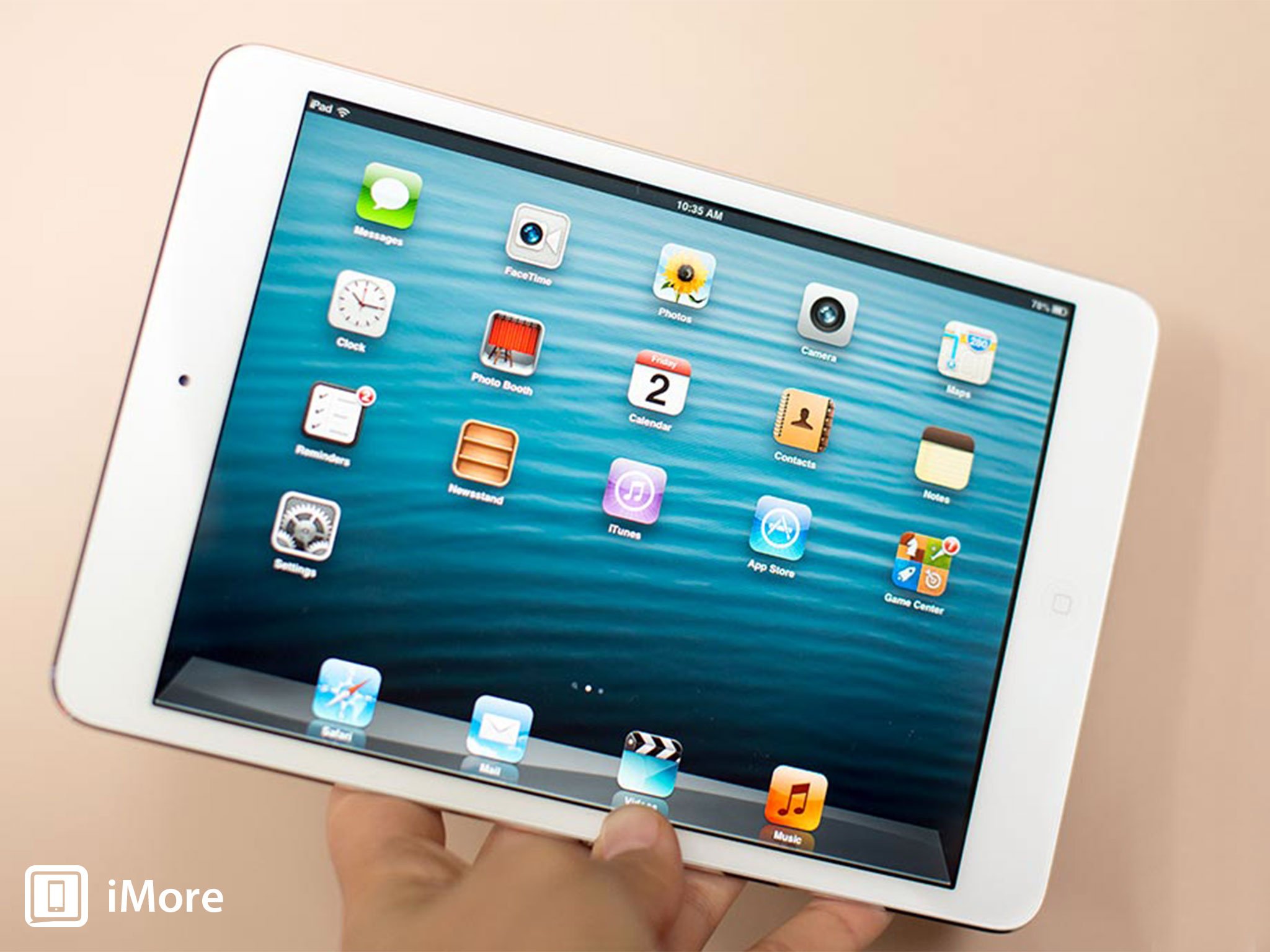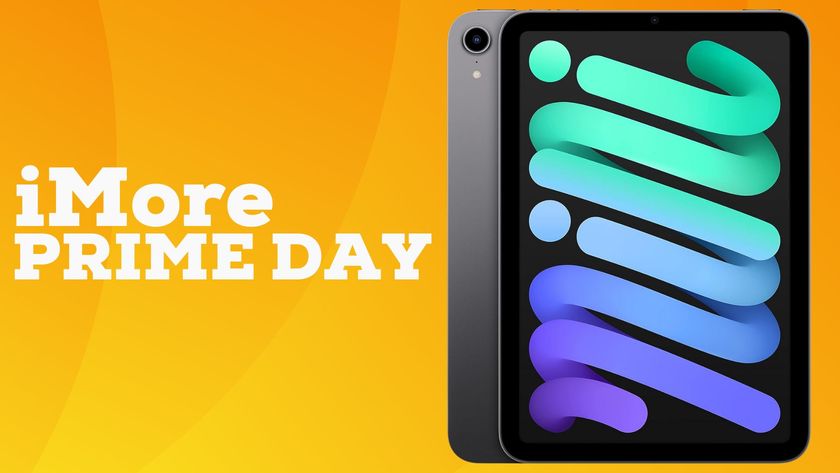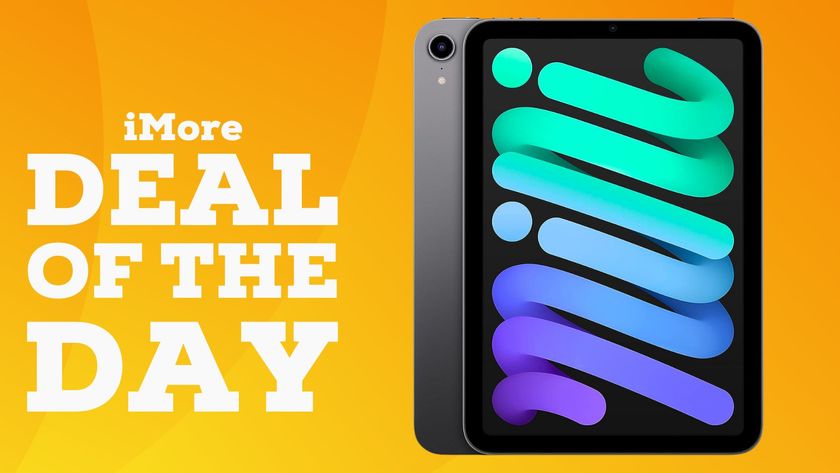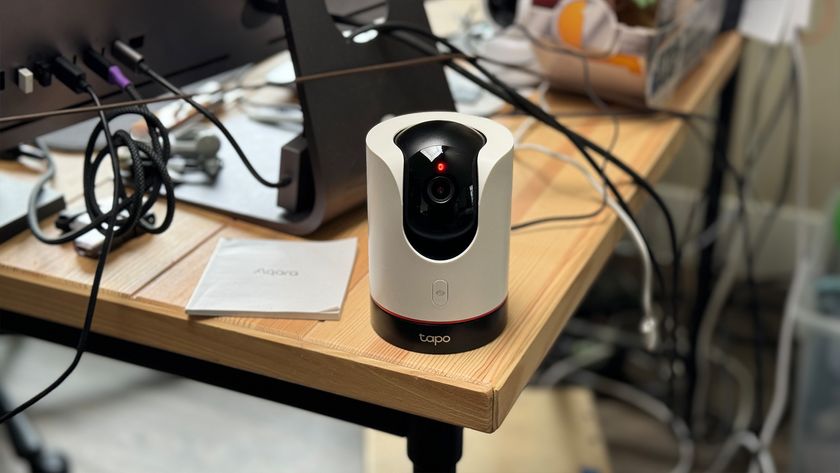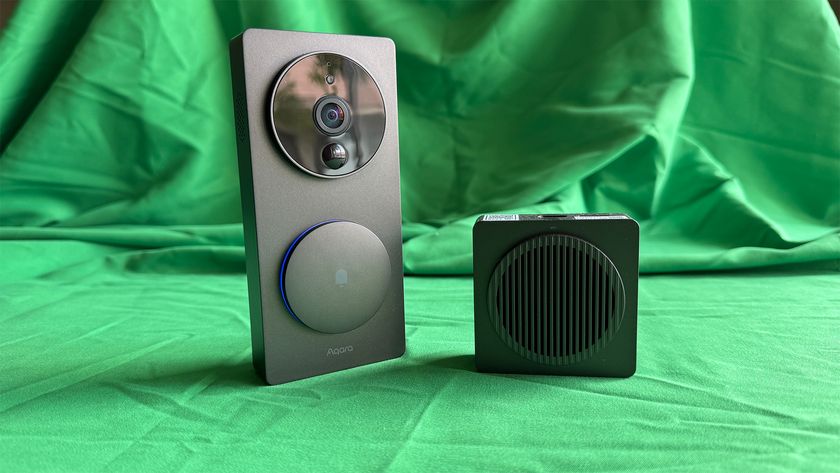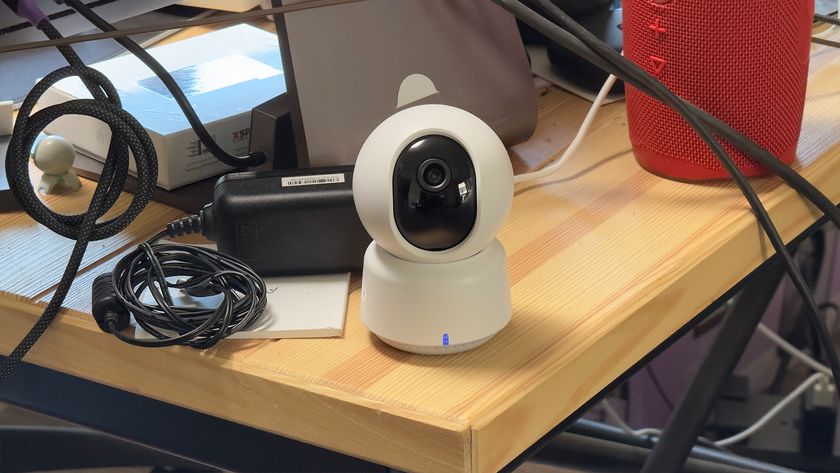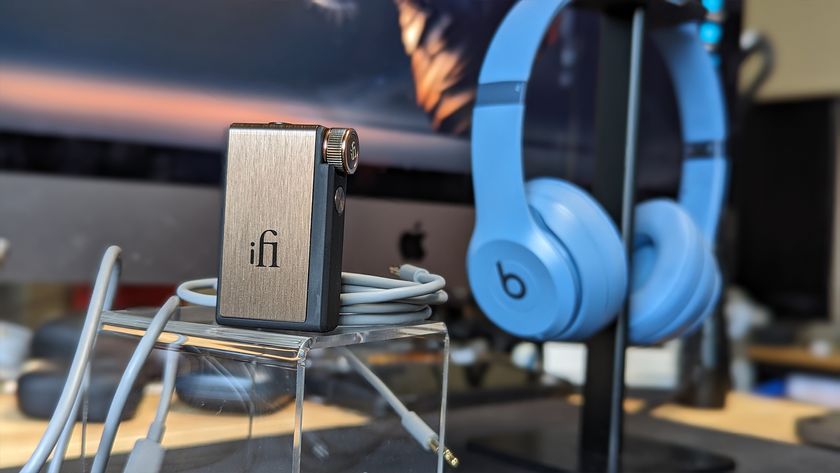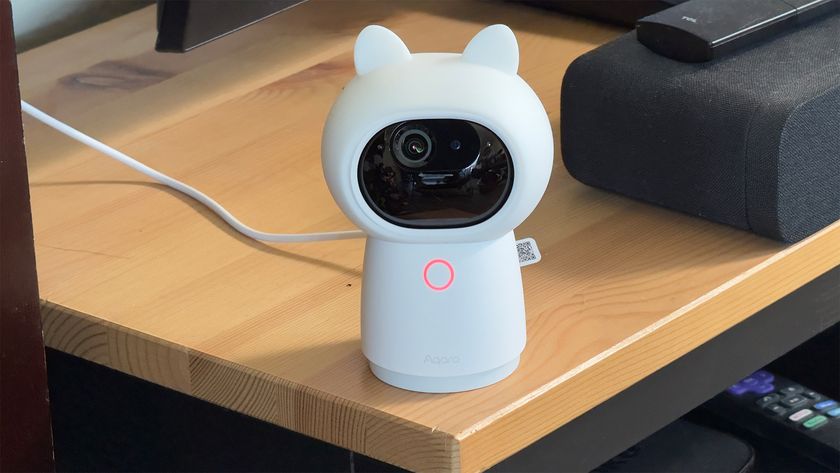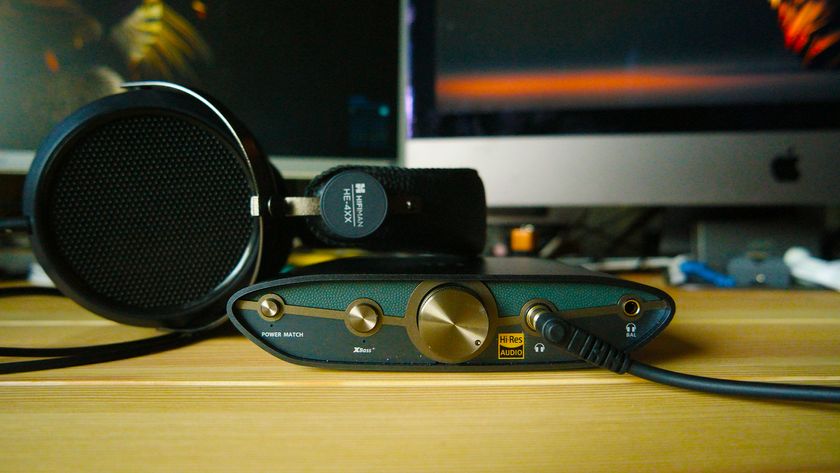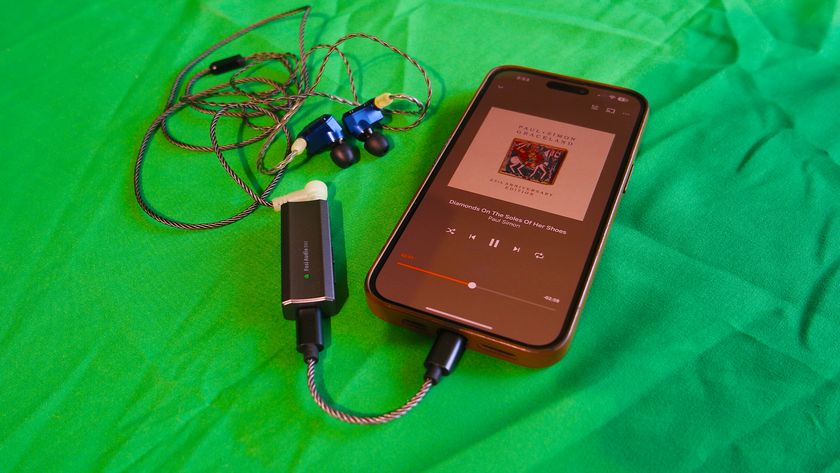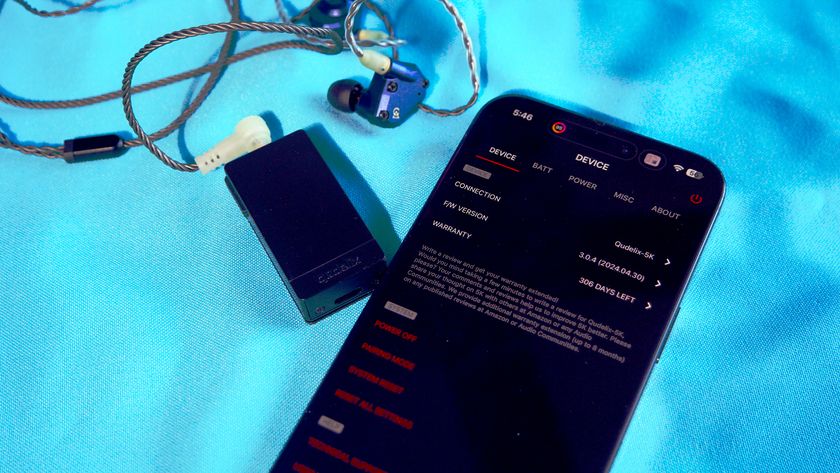The definitive review of Apple's smaller, thinner, lighter, non-Retina iPad mini
Once upon a time Apple had a big, industry leading product that they fearlessly overshadowed by releasing a slightly cheaper, more portable version. That was January, 2004 and the product was the iPod mini. This is October, 2012 and Apple has just done it again with the not-coincidentally named iPad mini.
Like the iPhone 5, the iPad mini looks and feels almost unreal. It's not much smaller than the full-sized iPad 4, 7.9-inches diagonally across the display rather than 9.7, but it's almost 25% thinner -- as thin as the last generation iPod touch -- and over 50% lighter. Yet it still runs the same tablet-optimized version of iOS 6 as the iPad 4, and has access to the same 700,000+ apps, 275,000+ of which are tablet-optimized.
Unlike the iPhone 5 and iPad 4, however, the iPad mini uses last year's specs to get that thin and light, and run all those apps. That means no Apple A6-series processor, and most noticeably, no Retina display.
So does portability ultimately win out over power and pixel density, or is Apple's iPad mini a non-Retina non-starter?
Previously on iPad...
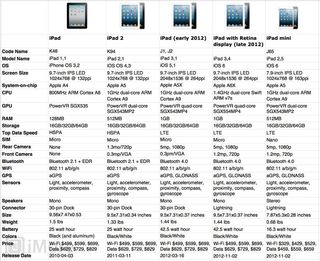
While this is the first iPad mini Apple has ever released, it's certainly not the first iPad. For more on Apple's tablet platform in general, see our previous reviews. Since the iPad mini is internally classified as a variant of the iPad 2, for more particular information on that architecture, see the iPad 2 review.
iPad mini: Technology
In many ways the iPad mini stands in stark contrast to the simultaneously released iPad 4. Where the iPad 4's changes were mostly on the inside, thanks to a faster processor, updated radios, a better front-facing camera, and a newer connector, the iPad mini's changes are almost all on the outside. Sure, the iPad mini also has the Lightning connector and the new iSight and FaceTime cameras, but otherwise its components are identical to the early 2012 version of the iPad 2, complete with die-shrunk Apple A5 processor and non-Retina display.
That same blend of old and new is just as evident in the iPad mini's model number: iPad 2,5. Apple considers it an evolution of the iPad 2 platform, albeit in a radically smaller form.
iPad mini: Design

Apple senior vice-president of industrial design and human interface, Jonathan Ive, said the iPad mini isn't merely a reduction of the existing, full-sized iPad, but a concentration. The overall difference in physical size works out to 7.87x5.3x0.28 inches for the iPad mini vs. 9.5x7.31x0.37 inches for the iPad 4. The difference in weight is 0.68 vs. 1.44 lbs. That makes the iPad mini almost a quarter thinner and half as light as the iPad 4.
The iPad mini isn't as light as some slightly smaller but thicker competing tablets, but its aluminum unibody gives it a substance beyond what's been attained by squeaky plastic substitutes. Compared to the regular iPad, however, the difference in weight is profound. Where the iPhone and iPod can be used one handed, and the iPad requires two hands, the iPad mini is your hand-and-halfer.
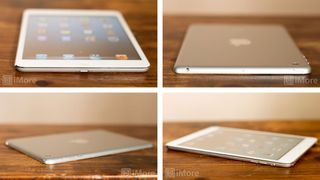
And that same trick the iPhone 5 and iPod touch 5 play, where they seem smaller and yet bigger, or as Apple puts it, there's more of them and less of them at the same time? Yeah, the iPad mini does that too. While the iPad mini is roughly 60% of the iPad 4's surface area, the iPad mini's screen is 66% of the iPad 4's screen size. So, while the iPad mini display is 7.9-inches to the iPad 4's 9.7, it covers more of the front of the device. Much of that is due to the iPad mini's much smaller side bezels. Proportionately, they fall between the iPad 4 and iPod touch in terms of relative width, but on devices the size of the iPad and iPad mini, it makes for a bigger visual difference.
If you're worried that the smaller bezel makes harder to find a hand-hold on the iPad mini, it does. Apple has taken that into account by including software in iOS 6.0.1 to better detect and reject unintentional touches on the sides of the display, so you can pretty much hold the iPad mini however you like. Because it's so much lighter, a large bezel isn't anywhere nearly as necessary as on the full-sized iPad.
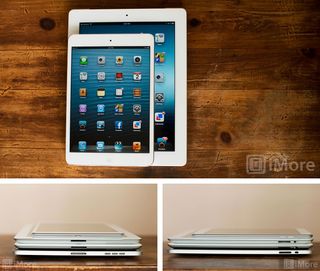
Unlike the last 3 generations of iPad, which haven't changed their design language in two-and-a-half years, the iPad mini benefits from every bit of advancement Apple's made in their manufacturing process. While the front looks the same as the larger iPad, indeed the same as every iOS device, the back and sides now sport the ultra-modern iPod touch 5 look.
The same anodized aluminum, flat backed, rounded edged, metal buttoned, mono-crystalline diamond-cut chamfered design that wraps the new iPod touch wraps the new iPad mini. Apple calls it their most advanced unibody design yet, and it looks it. Down to the micron.
The iPad mini also comes in the same Darth Vader black-and-slate and Storm Trooper white-and-silver color options as the iPhone 5 and iPod touch 5 (though the iPod touch now comes in many more colors as well). Yes, that means you can get your iPad mini to either match or contrast your iPhone or iPod perfectly.
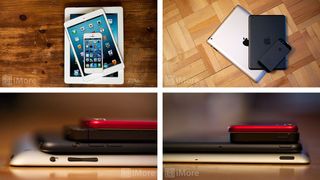
While the high quality of Apple's materials help give their devices the best build quality in the industry, the smooth, metallic finish isn't as easy to grip as some of the soft-touch finishes used by their competitors. The iPad mini in particular suffers from this because, due to its size, you want to hold it in one hand, and the lack of friction makes it a challenge.
Skins and cases will no doubt help with that immensely, and on balance, I far prefer higher quality materials that I can cover than lower quality materials that aren't as structurally sound or long lasting.
iPad mini: 7.9-inch non-Retina display
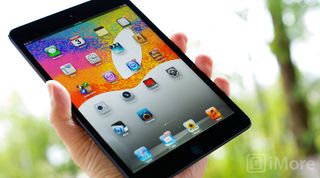
The iPad mini has a 1024x768 LCD screen with LED backlighting for excellent color and clarity and, thanks to IPS (in-plane switching) technology, excellent viewing angle as well. Unlike the iPad 4, however, instead of a 9.7-inch screen, the iPad mini has a 7.9-inch screen. That's 33% less screen real-estate (45.2 square inches to 29.6 square inches), yet because Apple kept the 4:3 aspect ratio of the bigger iPad, the iPad mini still manages to have 35% more screen real-estate than competing 7-inch, 16:9 tablets like the Google/Asus Nexus 7 (21.9 square inches).
Here's what Apple's current iOS product lineup (left) looks like compared to Google's Nexus line (middle), and Amazon's Kindle Fire HD (right).
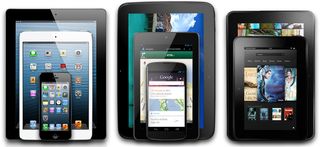
It turns out that for tablets, not only physical size, but aspect ratio does matter (see Interface, below), but the big story here's what the iPad mini display doesn't have.
Retina.
If you're not familiar with the term Retina display, it's the marketing jargon Apple uses to describe HiDPI (high dots-per-inch), or screens that have pixels so small they "disappear", providing a more enjoyable, more photographic experience. Instead of the dots that make up the face or text or character you're looking at, you just see the face or text or character.
The iPhone and iPod touch went Retina is 2010 and the full sized iPad, and even the 15-inch and 13-inch MacBook Pros, followed suit in March, June, and October 2012 respectively. In fact, the last time Apple released a non-Retina iOS device was the iPad 2 in March of 2011. And that's the device upon which the iPad mini is based.
Why Apple didn't include a Retina display on the iPad mini comes down to technology and price. The goal of the iPad mini was thinness and lightness. When the full-sized iPad went retina, it actually got thicker and heavier. Now, both the iPhone 5 and the iPod touch 5 have Retina displays and both stayed light and ludicrously thin. But iPhones and iPods have far, far fewer pixels than iPads. Right now the non-Retina iPad mini has a pixel count of 786,432 (1024x768) compared to the iPhone 5's pixel count of 727,040 (1136x640). A Retina iPad mini would shoot up to 3,145,728 (2048x1536). Lighting and powering that many pixels requires a lot of LED and a lot of battery.
Apple might have been able to put a Retina display in the iPad mini, but it would required it to be as thick and almost as heavy, and cost almost as much, as the iPad 4. That's not the device Apple wanted to make, and likely not the device most of us would want to buy. So Apple compromised on screen density in order to deliver a thinner, lighter, cheaper iPad mini today. When technology and costs allow for a thin, light, cheap iPad mini with a Retina display, we'll get one.
Here's a comparison between raw pixel resolution (top) and pixel density (bottom), for the iPad 2 (green), iPad mini (red), iPad 4 (blue), and iPhone 5 (purple) (from left to right). I've added 44x44px squares (standard tap target size in iOS) over the screens, so you can see how the relative pixel and touch sizes change when the displays are at physical scale (bottom).
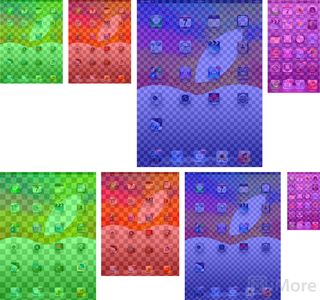
Because the iPad mini packs those 1024x768 non-Retina pixels into 7.9-inches rather than 9.7-inches, it is slightly denser than the iPad 2, namely 163 ppi rather than 132 ppi. Not coincidentally, 163 ppi is exactly the same screen density Apple manufactured for years for the original iPhone, iPhone 3G, and iPhone 3GS (which continued to be sold until September, 2012). So if you've used any of those early iPhones (or iPod touches), you have a rough idea what a 163 ppi screen looks like.
If you're curious, here's how the iPad mini (red) compares to the Nexus 7 (black) in terms of both pixel resolution (left) and pixel density at physical scale (right). (With the same iOS-standard 44px tap target size grid in place.)

Getting back to iOS devices, here are the actual displays, captured by a macro lens on a DSLR. First, the Safari icon on iPad 2 at 132 ppi, iPad mini at 163 ppi, iPad 4 at 264 ppi, and iPhone 5 at 326 ppi. (From left to right.)
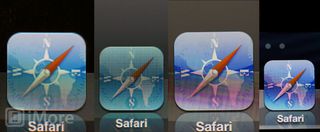
Obviously, the iPad 2 has the largest, most easily discernible pixels, and the iPhone 5 the least. The iPad mini, while better than the iPad 2, is still close enough that it looks about the same. Likewise, the iPad 4 isn't as good as the iPhone 5, but it's good enough that it's hard to tell the difference.
Here's some web text and graphics, same order of devices.

Here's iBooks text, again same order of devices (though I didn't have the same books available on the iPad 2).

And here's some iBooks graphics, just to highlight the difference between the iPad mini (top), iPad 4 (middle), and iPhone 5 (bottom).

Small text is noticeably pixelated and more difficult to read on the iPad mini. Going from the iPad 3 or iPad 4, and especially from the iPod touch 5 or iPhone 5 to the iPad mini isn't quite as bad as going to the iPad 2, but it's close. Going from the iPad 2 to the iPad mini is actually a small upgrade in terms of display quality, as is going from the iPhone 3GS or iPod touch 3 which have identical density but nowhere near as good color or clarity (thanks to the newer screen technologies, like IPS).
Fast moving video and video games hold up much better on the iPad mini, simply based on how we perceive and process images and motion. So, if that's your primary use case, you won't notice the difference as much. If reading is your primary use case, you'll notice it a lot more.
Personally, the lack of Retina on the iPad mini really bothered me a lot at first. Now it only bothers a little, and it's certainly not a deal breaker for me. The compactness, the thinness, and especially the lightness are profound enough that Apple's compromise on Retina turns out to be the same compromise I'm willing to make.
iPad mini: Apple A5 performance
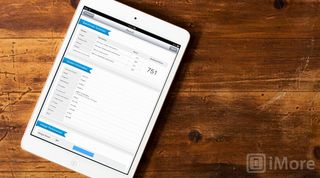
Instead of the latest, greatest, custom built Apple A6 system-on-a-chip (SoC) that Apple uses in the iPhone 5 and iPad 4, Apple is using the 32nm version of the Apple A5 SoC that debuted on the 2012 iPad 2 and is also being used in the iPod touch 5. (The original, 45nm version of the Apple A5 debuted in the 2011 iPad 2 and was subsequently used in the iPhone 4S.)
The Apple A5 pairs a dual-core ARM Cortex A9 central processor with a PowerVR SGX543MP2 graphics processor along with 512MB of RAM and the same 16GB, 32GB, or 64GB of NAND Flash storage common to the iPad line. So, again, we have the iPad 2 components in concentrated form. And because it's the same parts doing essentially the same work, the performance is, not surprisingly, the same.
Here's what the difference in CPU looks like on Geekbench 2 between the iPad mini, iPad 2 (top left and right), iPad 3, and iPad 4 (bottom left and right).

Those are pretty close to Geekbench's standard listings of 746, 781, 790, and 1755.
Here're SunSpider results for JavaScript rendering, which try to give an idea of how code-heavy sites like FaceBook or Google Docs will perform. (Same device order.)
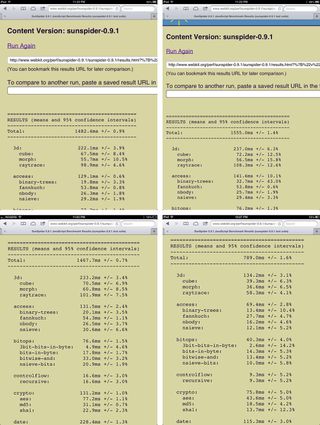
That's 1482.4 compared with 1555.0, 1467.7, and 789.0ms.
Finally, here are the most important tests, the real-world tests, which include booting up, rendering web pages, and launching apps.
All of these results show the iPad mini isn't only on par with the iPad 2, as expected, but also with the Retina display-burdened Apple A5X SoC on the iPad 3. It takes the double-fast Apple A6X on the iPad 4. Absent that Retina display, like the iPad 2, the iPad mini flies.
iPad mini: International LTE 4G and dual-band Wi-Fi
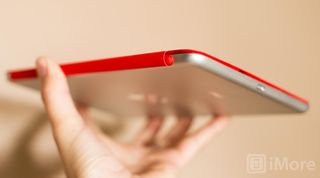
The iPad mini Wi-Fi + cellular isn't yet available, and won't be for another few weeks. As soon as it is, I'll update this review with proper test results. On paper, however, the Qualcomm MDM9615 chipset in the iPad mini should perform as well as well as it does in the iPhone 5, and provide support for AT&T, Verizon, and Sprint in the U.S., and multiple carriers in international markets. According to Apple, that will include:
- Model A1454: UMTS/HSPA+/DC-HSDPA (850, 900, 1900, 2100 MHz); GSM/EDGE (850, 900, 1800, 1900 MHz); LTE (AWS, 700b MHz) for AT&T, Rogers/Fido, Bell/Virgin, and TELUS/Koodo
- Model A1455: CDMA EV-DO Rev. A and Rev. B (800, 1900, 2100 MHz); UMTS/HSPA+/DC-HSDPA (850, 900, 1900, 2100 MHz); GSM/EDGE (850, 900, 1800, 1900 MHz); LTE (2100, 1800, 850, 700c, 1900 MHz) for Verizon, Sprint, Deutsche Telekom, EE, Optus/Virgin, Telstra, KDDI, Softbank, SK Telecom, KT, SmarTone, M1, SingTel, StarHub.
Unlike the iPad 4, but identical to the iPhone 5, the iPad mini uses the new nano-SIM standard. It's functionally the same as the micro-SIM in the full-sized iPads, but takes up less space which is an advantage for smaller devices like the iPad mini. Here's the difference in size between (from left to right), mini-SIM, micro-SIM, and nano-SIM.
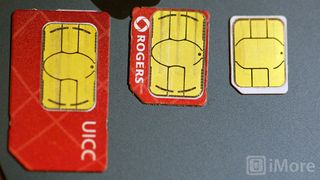
There's no NFC (near-field communications) to be found on the iPad mini, or any of Apple's mobile devices for that matter, but just like every device released since the iPhone 4S in October of 2011, the iPad mini sports Bluetooth 4.0. That will allow for low-power, instant pairing... when accessories eventually start coming onto the market in more than a slow, slow trickle.
Like the iPad 4, the iPad mini also supports dual-band 802.11n over both 2.4Ghz and 5Ghz, and channel-bonding. If your router supports it, the iPad mini can get on the clearer 5Ghz channel even if older, legacy devices force it to also still provide service on the more crowded 2.4Ghz channel. It also means the iPad mini can use two Wi-Fi channels at once, effectively doubling download speeds to a theoretical maximum 150 Mbps.
In practical use, Wi-Fi on the iPad mini was on par with the iPad 4. I only get 50 Mbps up on my internet connection, however, so I couldn't really put it in the red zone. If you do have super-fast Wi-Fi in your home, office, or school, however, the iPad mini should take good advantage of it.
iPad mini: iSight and FaceTime HD cameras

Unlike many competing small-sized tablets, the iPad mini comes with two cameras, a 5mp, 1080p iSight camera on the back, and a 1.3mp, 720p FaceTime HD camera on the front. On spec, these are the same cameras found on both the iPad 4 and the iPod touch 5. (The iPad 4's Apple A6X chipset includes a better image signal processor, however.)
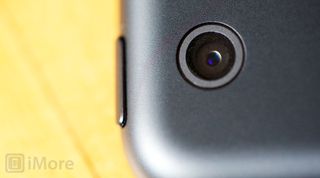
Here's a comparison our photo editor, Leanna Lofte, shot between iPad mini (left) and iPod touch (right).

And here are some of her other photo tests to show the iPad mini iSight camera in different lighting and motion conditions.
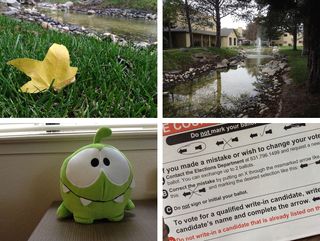
The iSight camera, while not the 8mp mobile monster found on the iPhone 5 is still good for a tablet, and great for a small tablet. It's got most of the usual iOS 6 bells and whistles, including tap to focus and balance, aperture and focus lock, and face detection for up to 10 faces. There's no high-dynamic range (HDR) or Panorama modes, however, which is are curious omissions.
The iPhone 5 camera is much better and while the iPod touch camera is the same, the iPod touch itself is much more portable. Both are better choices as a point-and-shoot replacement. The iPad mini iSight camera is still good for a mobile and great for a tablet, and if the iPad mini is the only camera you have with you, it may not serve you as well, but it will serve you well enough.

The FaceTime HD camera on the iPad mini shoots 1.3 megapixel stills and 720p video. It's a huge improvement over the embarrassing 0.3 megapixel, VGA video FaceTime camera included on previous generations of iPad, and it's great that Apple chose not to skimp on the iPad mini either.
A front-facing camera is mostly used for taking profile pictures and placing video calls, and FaceTime HD is certainly good enough for that.
iPad mini: Stereo speakers
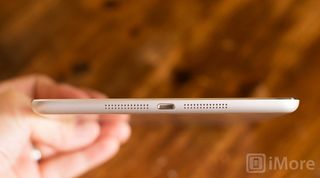
The iPad mini is the first iOS device blessed with stereo speakers. The two speakers are found on the bottom of the iPad mini, one on either side of the Lightning connector. While the value of having stereo sound on a device as small as the iPad mini is arguable, the value of having two speakers isn't.
As anyone who's ever tried to watch video or play video games on an iOS device can tell you, as often as not you end up blocking the speaker with your hand simply by holding your iPhone, iPod touch, or iPad in landscape orientation. You can always flip your device 180 degrees to put the speaker at the top, but it's annoying.
With the iPad mini, having two speakers means your only half as likely to be blocking the sound, and that awkward moment of of flipping your device around is a thing of the past. Hopefully all iOS devices pick up stereo speakers in the near future.
On the negative side, the iPad mini's speakers are just as tiny and tinny as we've come to expect from Apple. Making small speakers is incredibly hard, and Apple did improve their external speakers on the iPhone 5. The iPad mini speakers sound better, but don't register quite as loudly as the iPhone 5.
People who love audio will likely use headphones, and the iPad mini sounds as great with good headphones as the rest of Apple's iOS and iPod lineup. But iPads are more social devices. If you're sitting on a couch or at a table with family doing a FaceTime call with friends or relatives, you want everyone to be able to hear it, even if the surrounding room isn't totally silent.
iPad mini: Lightning connector

I've reviewed Apple's new Lightning connector on both the iPhone 5 and iPad 4 already. For both of those devices, Apple switched from the old 30-pin Dock connector used on previous generations to the new 8-signal Lightning connector for the current generations. Not so the first generation iPad mini. It was born with Lightning.
The advantages of Lightning are several, though their importance can vary considerably. Lightning is ambi-copular, meaning you can plug it in upside down or right-side up, and the all-digital pins just make it work. Sadly, Lightning is only on one end of the cable. USB is still on the PC/AC adapter end, and it's as one-sided as ever. If you're wondering if USB 3 is along for the ride, it doesn't really matter at this point. The NAND Flash storage used on mobile devices like the iPad mini couldn't keep up with it anyway, at least not yet. Likewise, Apple's new ThunderBolt connector requires PCI architecture to achieve its ludicrous speeds, and iOS devices aren't built on PCI.
Much of Apple's operating system is now wireless anyway. AirPlay lets you streams video and audio to an Apple TV or compatible speaker system, Wi-Fi Sync lets you exchange data with iTunes, AirPrint lets you send print jobs to compatible printers, iCloud handles set up, back up, and moving data between devices, and Bluetooth 4.0 offers low power, instant access to peripheral. Sure, for moving lots of big files back and forth, or for attaching to media or car systems so you can draw power while moving those big files, a cable is still necessary. It's just not required for everything. Not anymore.
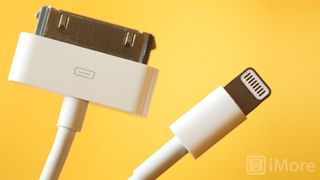
If you do have legacy 30-pin accessories from old iOS devices or iPods, especially ones that are hard or impossible to change, like built-in stereo or car kits, or office equipment like projectors, Apple is happy to sell adaptors. There are Lightning to 30-pin Dock adapters available both as a dongle and as a short extension cord, as well as Lightning to micro-USB to comply with European Union regulations. There are also Lightning to VGA and Lightning to HDMI adapters, and Lightning to SD card and Lighting to USB readers on the way, though they hadn't hit stores in time for this review. The first two will let you connect to projectors or external displays and television sets (in case you don't have an don't want an Apple TV for AirPlay). The second two will let you quickly offload photos taken with a dedicated point-and-shoot or DSLR camera for editing and storing on your iPad mini, and also let you connect other USB accessories that don't require power, like some external microphones.
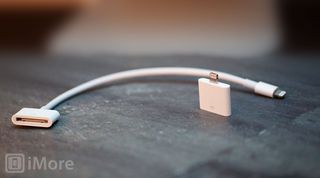
The real advantage to Lightning is that it's 80% smaller than the old 30-pin Dock connector, which means Apple can now make devices that are much thinner than previous generations. The iPod nano is the new king of crazy thin, and the new iPod touch 5 isn't far behind. But the iPad mini is as thin this generation as the iPod touch was last generation, and that's crazy enough in its own right.
iPad mini: Battery life
The iPad mini promises the same 10 hours of Wi-Fi web surfing and video watching, and 9 hours of cellular web surfing as the iPad 2 and the iPad 4. Since the iPad mini Wi-Fi has only be on the market for a week, and the iPad mini with Wi-Fi + cellular hasn't even shipped yet, it's too soon to compare those ratings with reality. I'll follow up with more detailed battery life results later, but so far the iPad mini's battery life has been tremendous. Even with steady use, it's lasted days on end. It reminds me far more of the iPad 2 in that regard than the Retina iPad 3 or iPad 4.
The iPad mini uses the same compact AC adapter as the iPhone, rather than the bigger brick that's traditionally come with full-sized iPads. When bridging between an outlet and a Lightning cable, it seems to charge quickly enough. Certainly much faster than a full-sized iPad. Since the iPad mini's battery is only 16.3 watt hours, as opposed to to 25 watt hours for the iPad 2 and a whopping 42.5 watt hours for the Retina-equipped iPad 4, that stands to reason.
iPad mini: Experience
The iPad mini comes preloaded with iOS 6, which Apple says includes over 200 new features. Like the iPad 4, the iPad mini doesn't get all of those features. The new Phone features, obviously, are off the table, but the iPad mini also doesn't get Apple's new Passbook repository for tickets, cards, coupons, and other vouchers. The iPad mini does get is the all-new Maps app, for good and for ill, as well as Siri for the iPad, Facebook integration, shared Photo Streams, enhancements to Mail and the Safari web browser, FaceTime over cellular, enhanced Accessibility including Guided Access, and improved support for China.
The video above gives an overview of iOS 6 on the iPhone in real-world settings, but most of it applies to the iPad mini as well. For a complete look at all the new features in iOS 6, see our definitive guide:
iPad mini: Interface
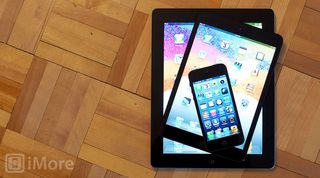
When Apple introduced the iPad they didn't simply scale up the existing iPhone iOS interface. Instead, they created a new screen size, screen resolution and aspect ratio, and initially used a lower pixel density. Because big tablets are generally held further away than small phones, the difference in pixel density wasn't readily apparent to the naked eye. Having a lower point density, however, would have made a difference when it came to usability. Interface elements are slightly bigger on the full-sized iPad than on the iPhone and there's an important reason for this -- accuracy decreases over distance.
The iPhone is small enough that it can generally be used one handed, and small enough that even when a finger is displaced, it's a short, incredibly easy-to-judge distance. The odds of missing even a smaller button are low.
The full-sized iPad is big enough that it requires two hands to use, and big enough that when a finger is displaced, it's for a longer, not always as easy-to-judge distance. The odds of hitting a bigger tap target (i.e. button) are higher.
The 9.7-inch iPad has considerably more screen space than the 3.5-inch iPhone, and Apple wisely leveraged it with bigger interface elements to increase usability. That's especially important for children, seniors, and people who have found pre-iOS computing devices intimidating or inaccessible, and might be in a higher stress state to begin with when faced with interface elements.
The iPad mini uses exactly the same tablet-optimized version of iOS as the full-sized iPad, but now scales everything down from 9.7 inches to 7.9 inches. Here's where things get interesting. iOS uses 44x44 points as the standard tap target size (that's 44x44 pixels on non-Retina devices, 88x88 pixel-doubled, or @2x, on Retina devices). The iPhone uses a screen density of 163/326 (non-Retina/Retina). The iPad uses a screen density of 132/264 (non-Retina/Retina). That means 44 points are rendered physically larger on the iPad screen then they are on the iPhone screen, so tap targets are larger and easier to hit over distance on the iPad than they are on the iPhone. The iPad mini uses a screen density of 163 (non-Retina), identical to the iPhone. That means 44 points are rendered on the iPad mini at the same size as they are on the iPhone, and so the tap targets are the same size on the iPad mini as they are on the iPhone.
Here's a look at the Settings, Sound screen from iOS 6 on the iPhone 5 (left), iPad mini (center), and iPad 4 (right) at relative physical scale, with a 44 point grid overlaid on top of them. (The Retina iPhone 5 and Retina iPad 4 have faint 44 pixel grids as well, for consistency with previous diagrams.)

Since the iPad mini uses the iPad version of the iOS interface and not the iPhone version, and since 7.9 inches is bigger and requires more travel to navigate than 4 inches, it does make the iPad mini slightly less usable than the iPhone, but at no point does it become unusable.
Most importantly, keeping the same iOS for iPad interface and scaling it down means all of the existing 275,000+ iPad-optimized apps "just work" on the iPad mini. They run identically to how they do on the iPad 2, only at a smaller physical scale. No additional work for developers and designers, nothing to re-buy for customers, and no extra bloat in the already tubby universal app file sizes for everyone. It's the simplest solution, and those are the ones Apple typically implements.
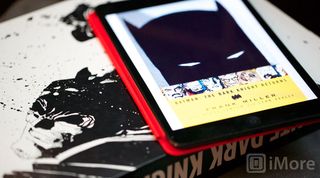
Part of what makes the iPad mini more usable than it might otherwise be is the choice of screen size and aspect ratio. The iPad mini isn't just a 7-inch tablet. It's a 7.9-inch tablet with a 4:3 aspect ration, and again, that makes a difference. When Apple introduced the iPad mini, senior vice-president of worldwide marketing, Phil Schiller, spent quite a bit of time comparing it to the Google Nexus 7, especially when it came to the merits of the iPad mini's 4:3, 7.9-inch screen over the 16:10, 7-inch screen of the Nexus 7 (and the Amazon Kindle Fire HD 7).
Apple's math highlighted the 35% larger physical screen size (29.6 square inches vs. 21.9 square inches). Amazon, however, has focused on screen resolution, putting the iPad mini's 1024x768, 163 ppi display against the Kindle Fire HD's (identical to Nexus 7) 1280x800, 254 ppi display. Amazon's math worked out to 30% more pixels (1,024,000 vs. 786,432 pixels) and 33% higher pixel density (216 vs. 163).
In the Display section (above), I've already compared the relative screen sizes and pixel densities, but here's how that translates into interface and usability.
Things will look bigger on the iPad mini (bigger pixels), but you'll see more of them on the Android tablets (more pixels). The iPad mini also has greater height (in landscape orientation) and width (in portrait orientation), thanks to its 4:3 aspect ratio. That's great for anything that requires reading, including ebooks, web pages, and the kind of multi-column interfaces found in the tablet-optimized version of iOS for iPad. Here's an example of a popular website on the iPad mini (left) and the and the Nexus 7/Kindle Fire HD 7 (right), in both landscape (top) and portrait (bottom). I've highlighted the interface chrome to better differentiate active content areas.
Thanks to the greater height in landscape, you get much more visible content on the iPad mini, and much bigger content, though it's not as sharp as it is on either the Nexus 7 or Kindle Fire HD. Because it isn't as tall in portrait, however, the iPad mini shows slightly less content, though Android 4.1 Jelly Bean's persistent control bar at the bottom mitigates some of the aspect ratio advantage.
Here's an example of a list-view based app, in the case the native mail apps, on the iPad mini (left) and the and the Nexus 7 (right), in portrait orientation.
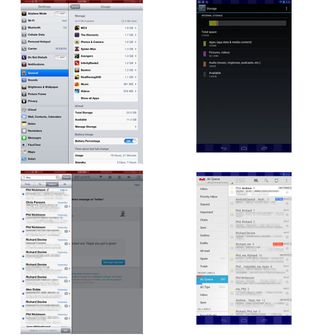
Because the Nexus 7 and Kindle Fire 7 HD have an aspect ratio of 16:10, closer to the 16:9 of the iPhone 5, it offers them greater width (in landscape orientation) and height (in portrait orientation). That's better for HD video and apps with single column lists. Here's an example of a popular movie on the iPad mini (left) and the and the Nexus 7/Kindle Fire HD 7 (right), in both widescreen (top) and full screen (bottom).

The iPad mini shows the wide screen version of the movie at a larger size, but downscales it from 1280 horizontal pixels to 1024 horizontal pixels (and vertically downscales from 720p to 585p). Both the iPad mini and the Nexus 7 and Kindle Fire HD 7 downscale 1080p, though the iPad mini downscales it more. Full motion graphics, like movies and video games, however, are extremely resilient when it comes to screen density (just look at the variety of sizes television sets come in). So, it looks fine, but it won't look as sharp as the pixel-perfect Android tablets.
So when it comes right down to it, the iPad mini interface is exactly the same as the iPad 2's interface, only smaller and denser. The smallness does reduces usability by a small degree, but not enough to matter to most people. The tiny increase in screen density does make things look slightly better, but likewise not enough to matter, and certainly nowhere near Retina-levels.
Design is about choosing the right compromises and ultimately, for the first generation iPad mini, Apple made the right choices.
iPad mini: Apple Retail and iCloud
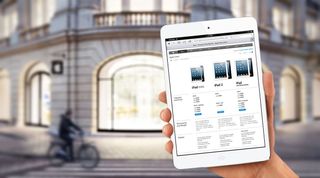
I'm including this as boiler plate in every Apple device review going forward, because it really matters. For consumers, both Apple Retail and iCloud can be a huge advantage to any hardware purchase, and the iPad mini is no different. When you buy an iPad mini at Apple Retail, they'll have specialists on hand to help you choose it, set it up, and teach you how to use it. And if you have a problem with it, they'll often go out of their way to fix it for you.
If something goes wrong with a non-Apple tablet, what are you going to do? Get stuck for hours on the telephone and hope for some kind of mail-order repair or exchange. Even if you get a replacement, while some information can be resynchronized over-the-air or via cable, it's often not an easy or complete process.
When I bought my iPhone 4S, the screen got hit by and ruined by fireworks (don't ask). When I bought my iPhone 5, there was a chip in the bezel. Both times I took my devices back to the Apple Store, was greeted by Apple staff, explained the problem, and immediately received replacements. Then I entered my iCloud ID, and walked out with every setting, app, piece of content, and bit of data exactly the same as I'd walked in with. A brand new phone, but exactly my phone.
If I have a problem with my iPad mini, I have every confidence the same would happen. That type of service is a feature, and one that absolutely needs to be considered when choosing which tablet to buy.
iPad mini: App and accessory compatibility

The iPad mini is 100% binary and interface compatible with all 275,000+ tablet-optimized apps in the App Store. It will also run most of the rest of the 700,000+ apps boxed in 1x or 2x, just like the full-sized iPads have always done. They're still chunky and fuzzy, but they work.
The iPad mini, due to its difference in form factor, isn't compatible with existing iPad cases, though it will fit into generic pouches or bags of appropriate size. Accessories built for a 30-pin Dock connector, including cradles and stereos, will likely work with a 30-pin to Lightning adapter. HDMI and VGA adapters have been announced, as have SD and non-powered USB adapters. Composite or component video out is not currently compatible, and likely won't be going forward. Headsets are compatible, both wired and Bluetooth.
iPad mini: Pricing
Apple claims the iPad mini is sold at lower margins than some of their other product lines, and given the build quality, materials used, and the components included, it's certainly of higher value than many other small-sized tablets, even if it's not as cheap.
Here are the current price points.
- $329/16GB, $429/32GB, $529/64GB for Wi-Fi only
- $459/16GB, $559/32GB, $659/64GB for Wi-Fi and cellular
Arguably, Apple could have released an 8GB iPad mini for somewhere around $229, but it looks like a) they didn't consider 8GB enough for a modern iPad, and b) they believe they'll sell as many as they can make anyway, so there's no need to artificially goose demand. Apple also hasn't historically been willing to subsidize hardware costs through search or content revenue the way Google does with the Nexus and Amazon does with the Kindle.
Steve Jobs once said that Apple's greatest mistake with the Mac was going for profit over market share. At the same time, both Steve Jobs and Tim Cook eschewed the bargain-basement netbook market, saying Apple doesn't know how to make crappy products that feel great when you buy them, but not so great after you've tried using them for a while. To reconcile both these statements, we have to look no further than previous iOS products.
It's not hard to believe that next year Apple will release a new iPad mini, and eventually, a Retina iPad mini. If Apple holds to pattern, that Retina iPad mini will start at $329, the same starting price as the current iPad mini. At that point, it's also not hard to believe Apple will do with the previous generation iPad mini what they've done with previous generation iPhones, iPods, and iPads -- keep it around at 16GB for $100 less. And there's your $229 iPad mini.
That likely won't happen for a while though, if ever. In the meantime, the amount of technology included in the incredibly thin, incredibly light iPad mini package is well worth the price Apple is asking for it.
iPad mini availability
- Available now: Wi-Fi only version in US, Australia, Canada, France, Germany, Hong Kong, Japan, South Korea and the UK
- Available in mid- to late-November: Wi-Fi + cellular version in US, Australia, Canada, France, Germany, Hong Kong, Japan, South Korea and the UK
- Coming by the end of 2012: Wi-Fi and Wi-Fi + cellular version in China and additional countries.
iPad mini: Buyers guide
If you don't currently have a tablet, and you're considering getting one, get an iPad. For most of the people most of the time, the iPad remains the easiest to use, most mainstream friendly, most content rich, most well supported tablet in the industry.
If you already have a laptop or ultrabook, like the MacBook Air, then you may not need everything the full-sized iPad has to offer, and the iPad mini could be a more portable choice. If you don't want to carry a laptop around with you and are looking for something more along the lines of a laptop replacement, the iPad 4 is a better choice, or if price is a concern, the iPad 2.
If you have an original iPad and found it to be too big and heavy, the iPad mini is a good upgrade. You'll lose screen size but you'll gain portability, and the iPad mini is otherwise better performing and more future-compatible in every way.
If you have an iPad 2, the iPad mini is roughly the same device, only smaller. It can't be a real upgrade in the sense of display or horsepower, the way an iPad 4 would be, but if you're fine with the iPad 2 specs and just want something easier to take around, the iPad mini can make a great cross-grade.
If you have an iPad 3 or iPad 4, you'd be stepping down considerably with the iPad mini. The performance isn't all that different in the real world, but the lack of Retina display is apparent. Unless, like with the original MacBook Air, size and weight are the absolute biggest considerations for you, the iPad mini is more an addition to your existing lineup than a replacement.
iPad mini: The competitive landscape
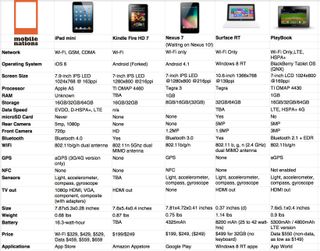
While Apple has dominated the full-sized tablet market since the introduction of the original iPad in 2010, the iPad mini enters a small-sized tablet market with several competitors already in place. I'd still argue the iPad, any iPad, is the gold standard when it comes to tablets, and the device that will best suit most of the needs of most of the people most of the time, there are other options worth considering.
- Amazon Kindle Fire HD is more media appliance than tablet. If all you want to do is consume content, you live in the U.S., and you're a huge Amazon users already, the low price can make it a tremendous value.
- Google Nexus 7 is the first good Android tablet, and in many ways it's more powerful, flexible, and customizable than the iPad mini's iOS. But it's also less polished and has very few tablet-optimized apps.
- BlackBerry PlayBook is outdated when it comes to hardware but has been slated for a BB10 software upgrade next year. If you look around, you can find it for $150, which makes it the best tablet if price is your only consideration.
Here's Android Central's Phil Nickinson with a hands-on comparison between the Nexus 7 and iPad mini.
And here's CrackBerry.com's Chris Parsons with a hands-on comparison between the BlackBerry PlayBook and the iPad mini
iPad mini: The bottom line
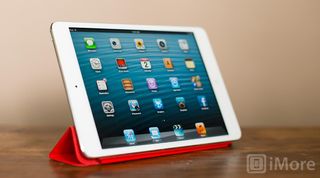
Where the iPad 4 is a two-handed beast, best suited for sitting at a table or lounging on a couch, and the iPhone 5 and iPod touch 5 are one-handed wonders, best suited for walking around or when on the go, the iPad mini is right in the middle. It's a hand-and-a-halfer, and that makes it better suited for commuting or lying down in in bed. It's not the best of both worlds, but it is the best compromise between the two.
When Steve Jobs introduced the iPad he said that, in order for it to exist, it had to be much better at a core set of things than either a smartphone or a laptop. It had to be much better at browsing, email, photos, video, music, games, and ebooks. For the iPad mini to exist between the iPhone/iPod touch and full-sized iPad, it has to be equally good, on balance, at all of those things.
And it is. The iPad mini does a better a job at Steve Jobs' list today than the original iPad did in 2010, and just as good a job as the iPad 2 does today. It's not as good as the iPad 4 simply because it doesn't have a Retina display. That makes text blurrier, especially at small font sizes, so browsing text, or reading email or ebooks, suffers as a result. Video, music, and gaming are all far more forgiving of the difference in density.
Whether the iPad mini will become Apple's best selling iPad, the way the iPod mini did for the iPod line, or whether the iPad mini will simply become an important niche, the way the MacBook Air has become for the MacBook line is irrelevant to me. The big iPad will eventually get thinner and lighter and the iPad mini will eventually get a Retina display, and both will likely sell in the hundreds of millions.
I like Retina. I've joked that non-Retina pixels are like sandpaper on my pupils. But having used an iPad mini for a week now, I find myself far too immersed in what I'm doing to give a damn about the display. I used to carry a MacBook and an iPad with me everywhere I went. If I dumped the MacBook, I'd stick with the powerful, pixel-full iPad. But I still need the MacBook, so from now on I'll be taking the portable iPad mini.
Now, today, the iPad mini is what Apple claimed it would be -- every inch an iPad (2), only in a more concentrated form.
And for many people, that's exactly the iPad they're going to want.
Leanna Lofte, Ally Kazmucha, Georgia, and Anthony contributed photography, videography, research, testing, and large amounts of time and effort to this review

Rene Ritchie is one of the most respected Apple analysts in the business, reaching a combined audience of over 40 million readers a month. His YouTube channel, Vector, has over 90 thousand subscribers and 14 million views and his podcasts, including Debug, have been downloaded over 20 million times. He also regularly co-hosts MacBreak Weekly for the TWiT network and co-hosted CES Live! and Talk Mobile. Based in Montreal, Rene is a former director of product marketing, web developer, and graphic designer. He's authored several books and appeared on numerous television and radio segments to discuss Apple and the technology industry. When not working, he likes to cook, grapple, and spend time with his friends and family.
